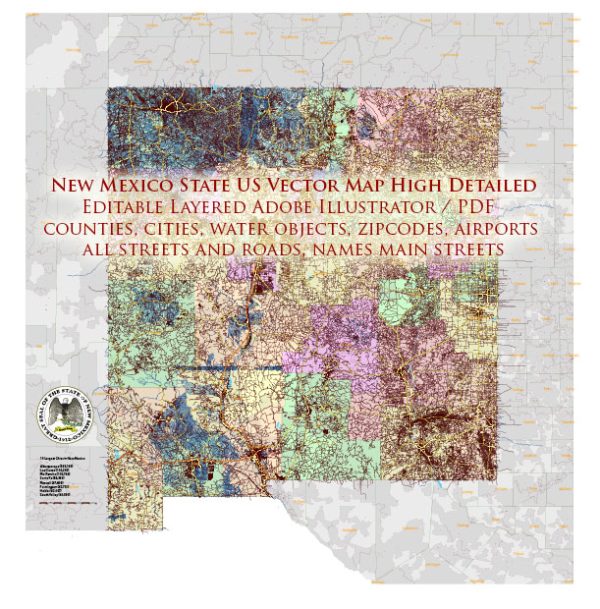The urban development history of New Mexico State in the United States is characterized by a unique blend of Native American, Hispanic, and Anglo influences. The state’s urban centers have evolved over centuries, shaped by cultural, economic, and geographical factors.
- Native American Influence (Pre-European Contact): Before the arrival of Europeans, various Native American communities, such as the Pueblo and Navajo, had established settlements throughout the region. These communities engaged in agriculture and trade, and some of their ancient urban centers, like Chaco Canyon, showcase early examples of complex infrastructure.
- Spanish Colonial Period (16th to 19th centuries): With the arrival of Spanish explorers and settlers in the 16th century, the area that is now New Mexico became a part of the Spanish colonial empire. The Spanish established several missions and towns, and the layout of these settlements often followed a traditional Spanish colonial grid pattern. Santa Fe, founded in 1610, is one of the oldest continuously inhabited cities in the United States and serves as the state capital.
- Mexican Period (1821-1848): After gaining independence from Spain, New Mexico became a Mexican territory. The urban development during this period continued to be influenced by Spanish traditions. However, the region experienced increased trade and cultural exchange with Mexican territories.
- American Territorial Period (1848-1912): As a result of the Mexican-American War and the Treaty of Guadalupe Hidalgo in 1848, New Mexico became a U.S. territory. The arrival of the railroad in the late 19th century had a significant impact on urban development, facilitating trade and connecting the state to broader national markets. Cities like Albuquerque and Las Cruces grew as transportation hubs.
- Statehood and 20th Century: New Mexico achieved statehood in 1912. The early to mid-20th century saw further urbanization and economic development, particularly during World War II when the state became home to military installations like Los Alamos and Sandia National Laboratories. The post-war period witnessed population growth and suburbanization.
- Contemporary Urban Development: In recent decades, New Mexico’s urban development has been characterized by a mix of preserving historical elements and accommodating modern needs. Santa Fe, with its adobe-style architecture, maintains a strong connection to its colonial past. Albuquerque, the largest city in the state, has seen growth in technology and research sectors, contributing to a more diverse and modern urban landscape.
Throughout its history, New Mexico’s urban development has reflected the cultural diversity and historical legacy of its Native American, Hispanic, and Anglo populations. The state’s cities and towns continue to evolve, balancing the preservation of cultural heritage with the demands of a rapidly changing world.


 Author: Kirill Shrayber, Ph.D.
Author: Kirill Shrayber, Ph.D.